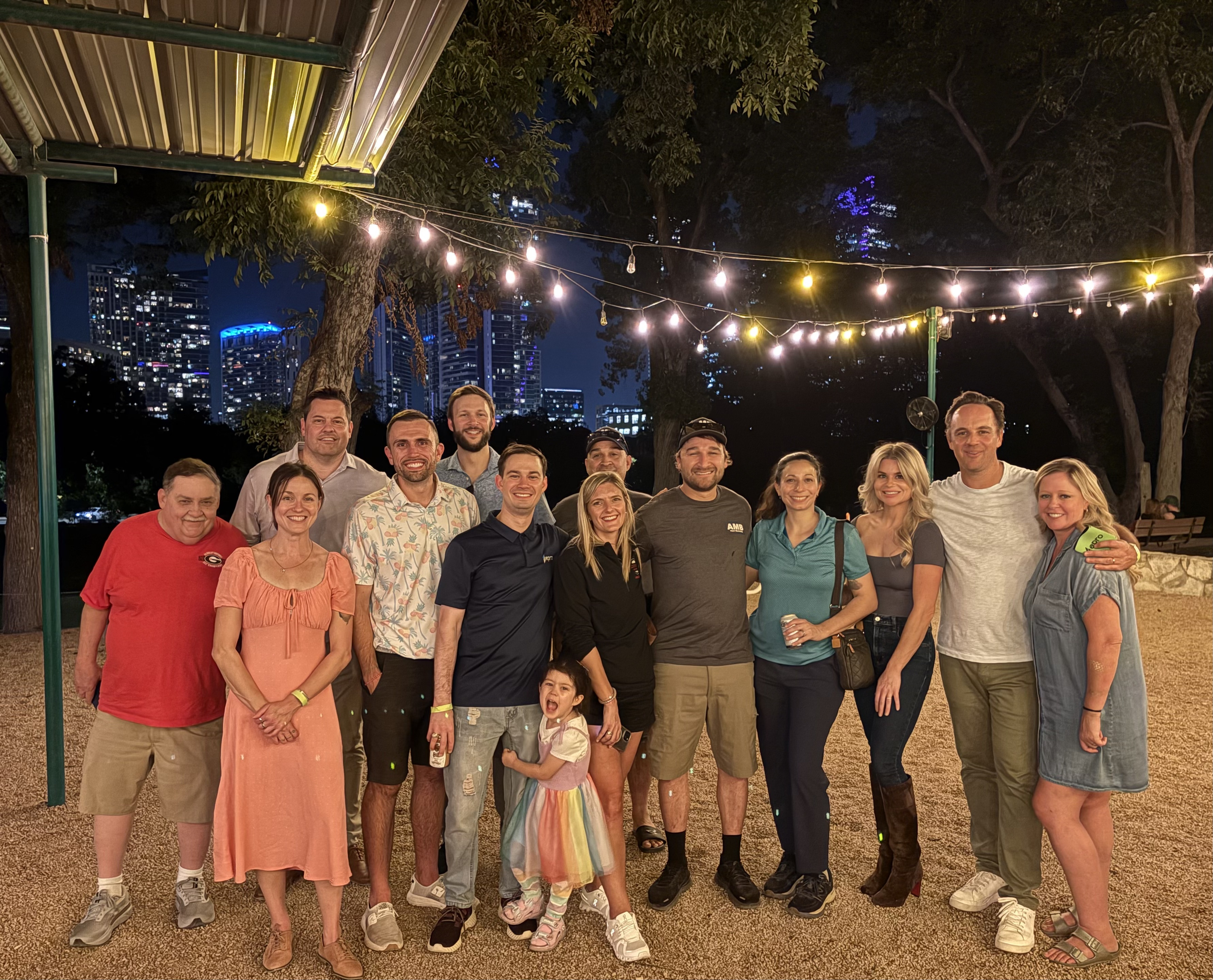The recent AVIP conference in Austin was crammed full of everything and anything related to vapor intrusion. Attendees heard regulatory updates from states such as Michigan, New Jersey, Ohio, and Wisconsin, and spend lunch hours listening to presentations focusing on the legal side of the industry.
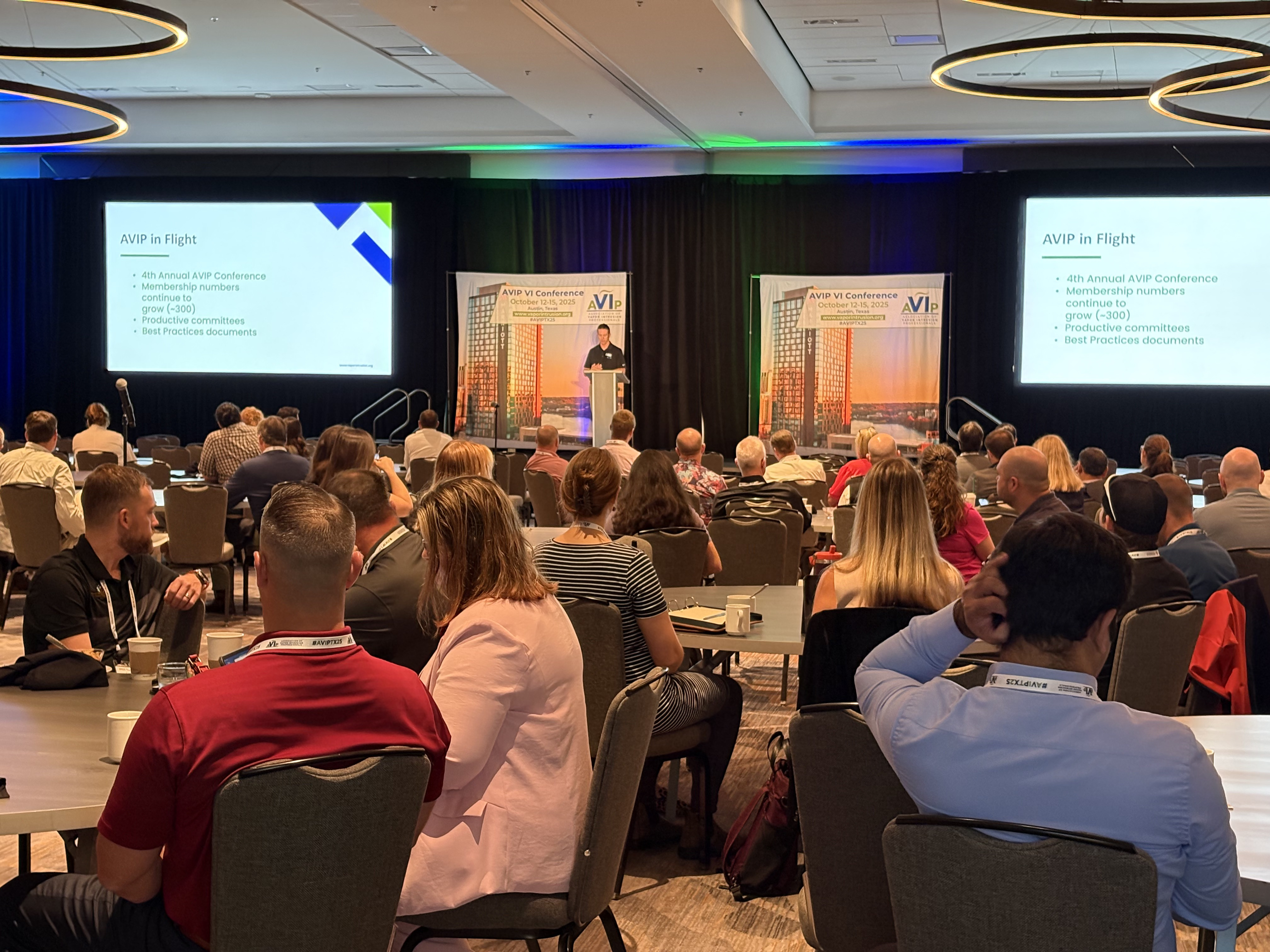
Many talented presenters shared their insight through the afternoon sessions. Among the speakers were:
Pinchin’s Jogesh Panda, who presented a mathematical tool that he developed at his company to determine critical design parameters for a passive venting system.
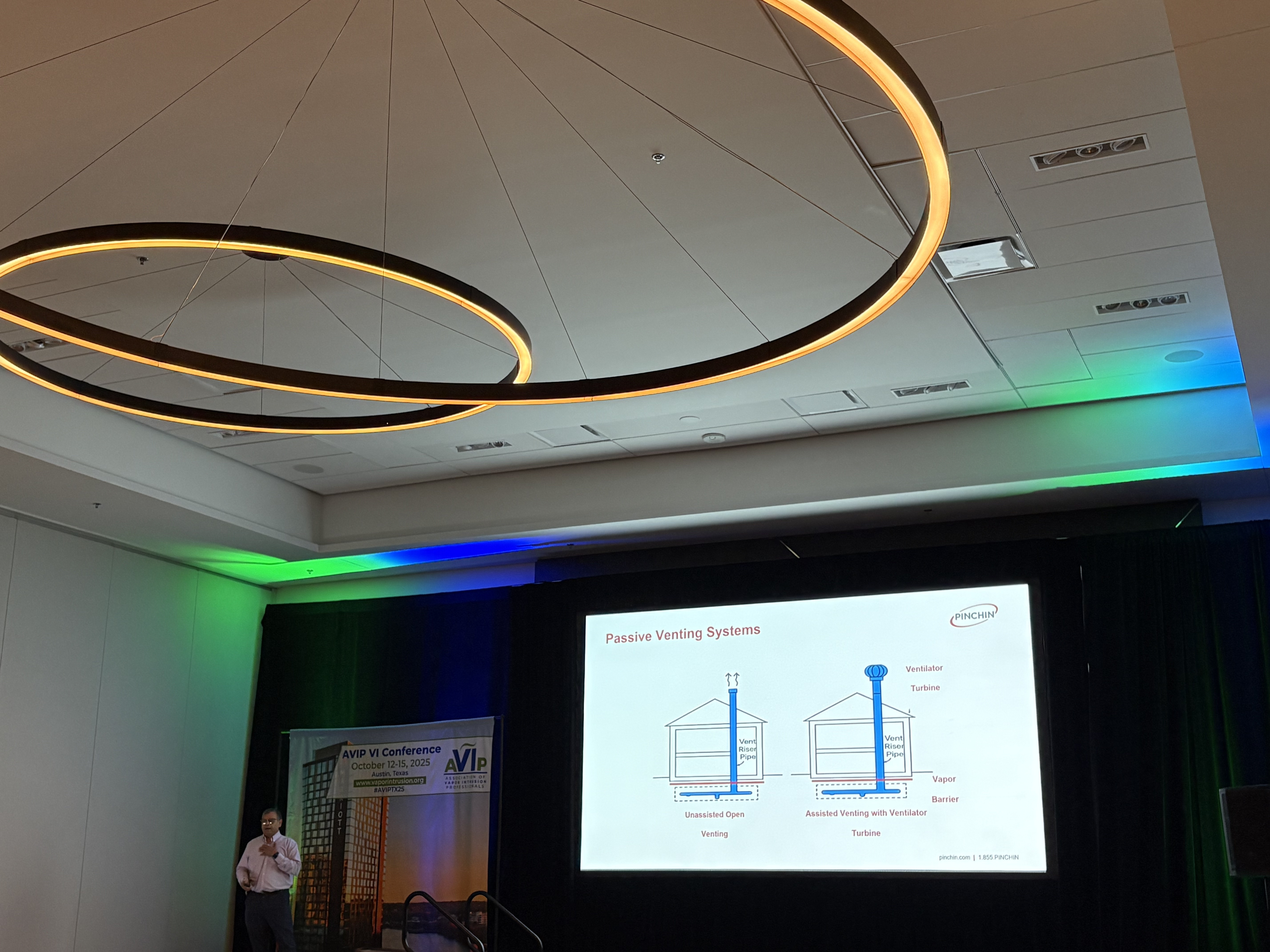
Matt Ambrusch of Langan who covered pneumatic modeling and showcased relevant case studies to illustrate this concept.
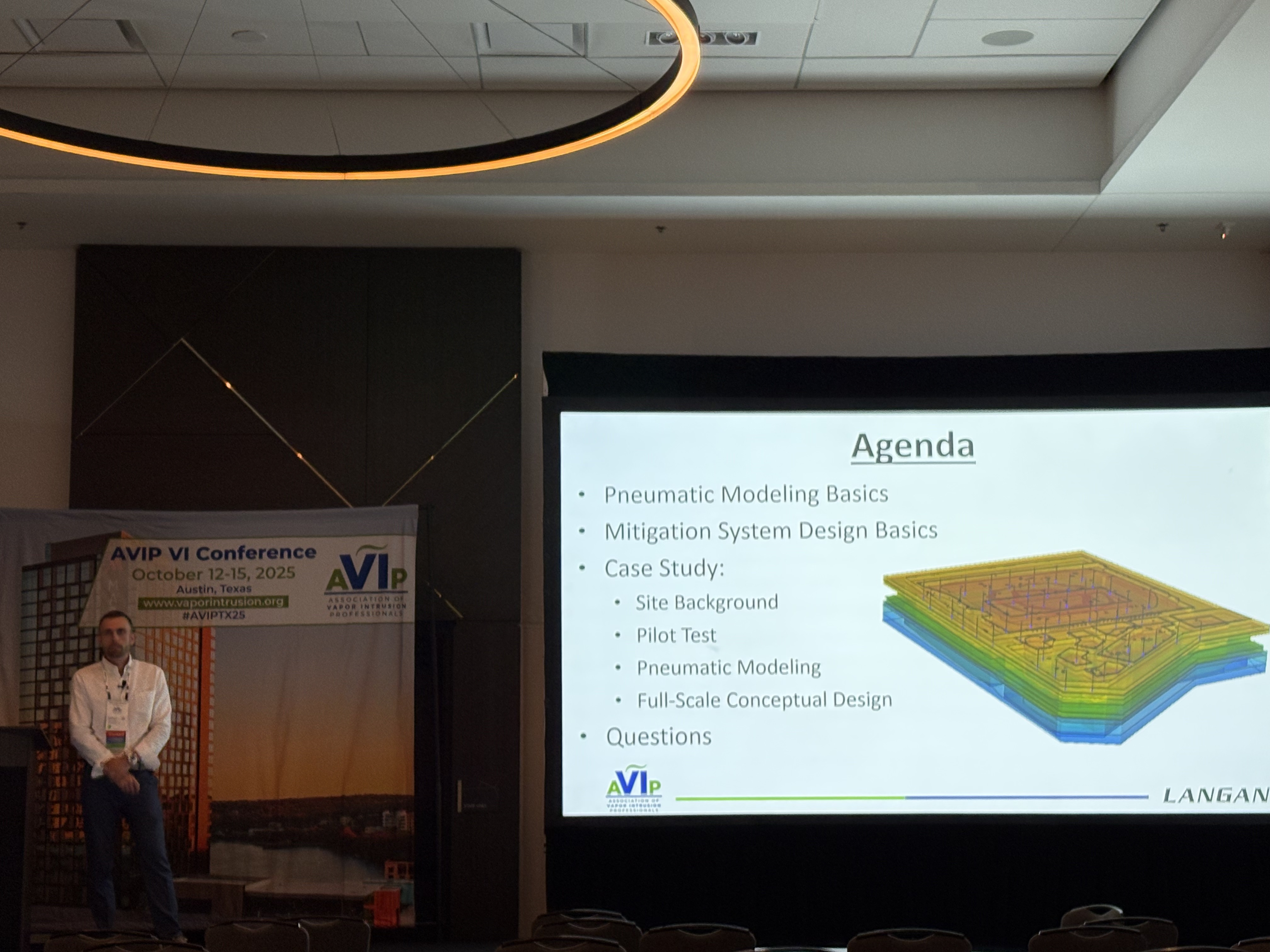
Modern Geosciences' Kenneth Tramm who presented on project risk levels (and determining these) in areas with no vapor intrusion regulations.
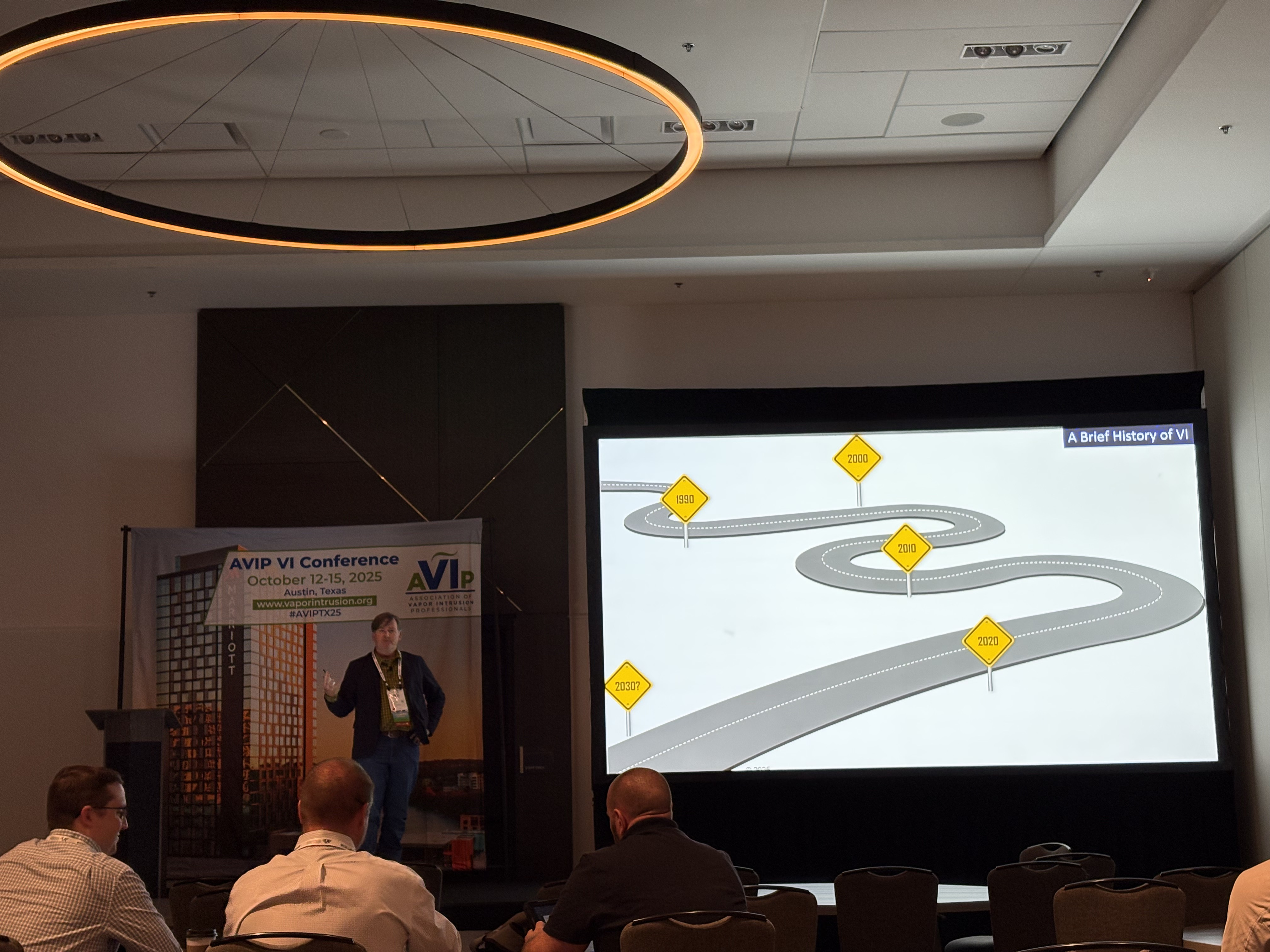
And Jim Fineis of Total Vapor Solutions who presented solutions developed by thinking “outside-of-the-box.”
EPRO’s Peter Grant took the floor to discuss the vapor intrusion “dynamics” between owners, regulators, and environmental consultants.
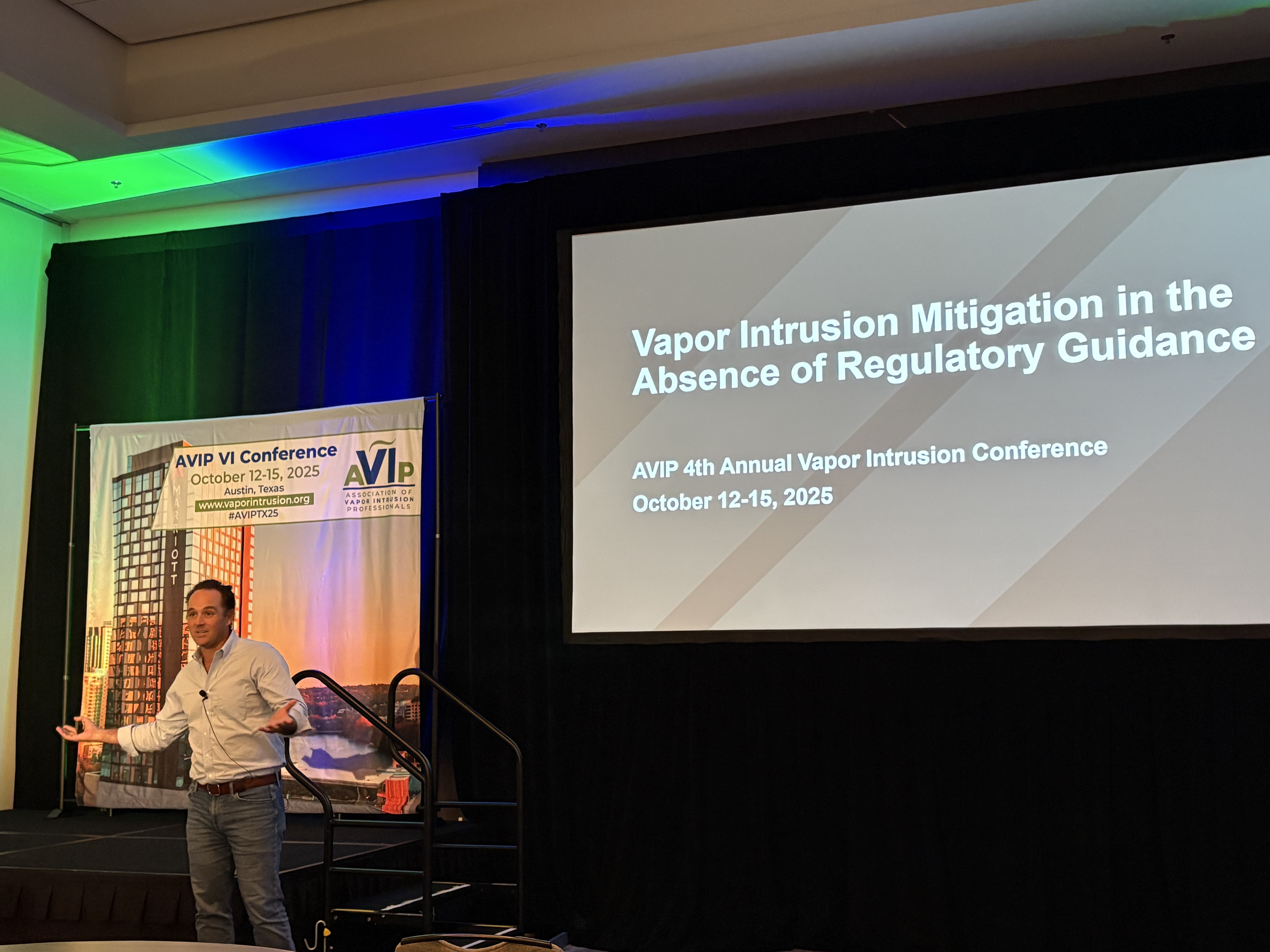
In states like Texas, pertinent for this year's AVIP location, no one is telling owners they need to do mitigation. Owners have been advised or forced to care – or they have been impacted . No regulation means that corners are cut along the way: The trifecta of owner, regulator and consultant have to work together.
To make things MORE confusing, there are different dynamics between the three in different states. Ultimately, everyone wants and needs to be on the same team and work together.
AVIP has developed a comprehensive best practice guide for developing a vapor intrusion conceptual site model. The guide highlights how risk and performance metrics are calculated. It also assists on obtaining site specific evaluations, the overall design framework, and it has guidance on how to integrate these with the project team.
In other words, this is a good platform to follow.
Download the full PDF of the guide, titled, “Best Practices for Developing a Vapor Intrusion Conceptual Site Model.”
And we hope to see you next year at the AVIP 2026 conference in Orlando!
